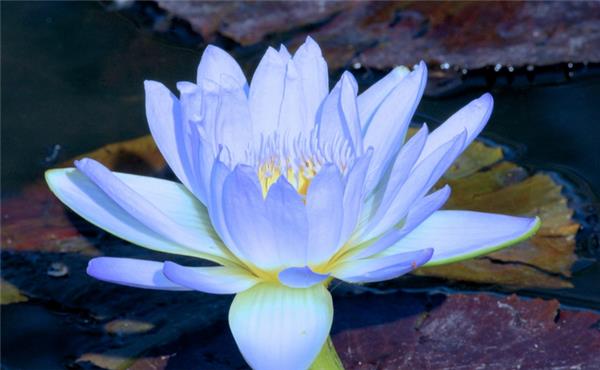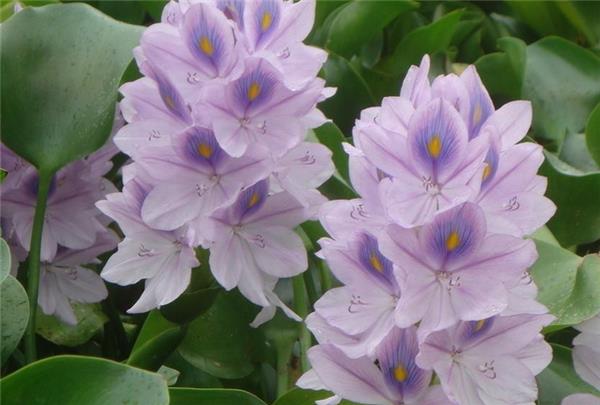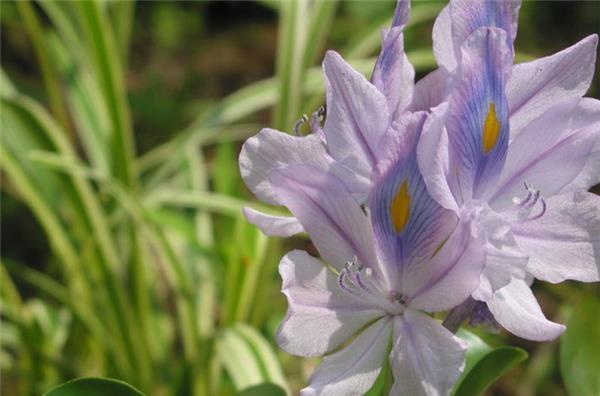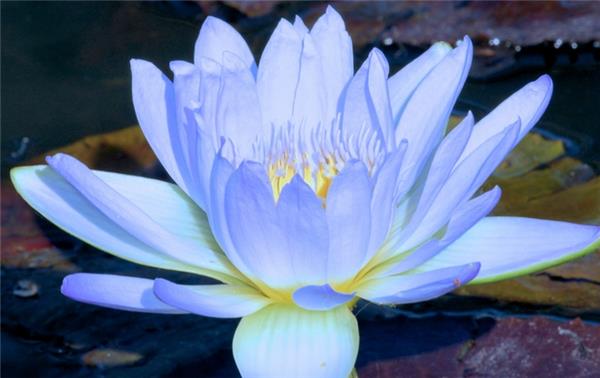[harm of Eichhornia crassipes] what are the hazards of hyacinth
Do you know what kind of plant water hyacinth is? When you see this name, it may not be clear what kind of plant it is, but when it comes to water hyacinth, there should be few people who don't know it. When I was a child, I saw this kind of plant by the river or in the pond. Its flowers are very beautiful and purple. So do you know what the function of hyacinth is? Where is its harm?

First, the harm of water hyacinth
1. Because of its strong reproductive ability, it will block waterways and affect shipping and excretion, and can become the number one enemy of agriculture, water conservancy and environmental protection.
2. It also restricts the flow of the water body, which makes the water body stink without sunlight, which will continuously reduce the amount of dissolved oxygen in the water body, inhibit the production of plankton, and then destroy the river ecological environment.
3. Because the speed of reproduction is fast and the viability is very strong, this provides a breeding ground for germs such as blood-sucking insects and encephalitis and influenza, and mosquitoes and flies provide opportunities for mosquito larvae to breathe and reproduce.
4. It is blocked because of its multiplication, which makes the water body unable to flow freely, so that all kinds of pollution sources such as heavy metals and other trace elements harmful to the human body can not be effectively removed. In this way, people will absorb the polluted water directly or indirectly.

The function of Eichhornia crassipes
Medicinal value: the flowers and tender leaves of Eichhornia crassipes can be eaten directly, and the taste is fragrant and refreshing, so it has the effect of relieving bowels, clearing heat and detoxification, diuresis and detumescence. The whole herb is used as medicine, collected in spring and summer, washed, dried or used freshly. Main treatment of skin eczema, nephritis edema, adverse urination and so on.
Ornamental value: Eichhornia crassipes is an important landscaping decoration in the waterscape of the garden. it is planted in a small pond and framed with bamboo.
Purify the environment: hyacinth is a plant that detects environmental pollution. It can monitor the presence of arsenic in the water and purify harmful substances such as mercury and lead in the water.

How to prevent and control the harm of water hyacinth
At present, the methods of prevention and control of water hyacinth are mainly chemical control, biological control, artificial and mechanical salvage and comprehensive control. The chemical control method is simple and effective, and herbicides such as glyphosate and glyphosate are commonly used for control. However, herbicides are destructive to the water ecosystem, pollute the environment, and can not remove the seeds of water hyacinth, so the effect can not be lasting. Biological control method is to use the theory of ecological balance between plants and natural enemies to introduce natural enemies from the origin of water hyacinth to establish a population and carry out long-term control of water hyacinth. Biological control has the advantages of safe environment, low cost and long-lasting effect, which has been paid attention to at home and abroad, but the disadvantage is that the effect is slow, from releasing natural enemies to achieving significant control effect, it generally takes 5 years or more. The manual and mechanical control method is to salvage the water hyacinth manually or mechanically, which has a quick effect, but when the occurrence area is large, the labor intensity is high. Like chemical control, manual and mechanical control is also difficult to remove seeds in water, and the control effect is not long-lasting. The comprehensive control method is to adopt the above control measures pertinently, learn from each other's strong points to make up for their weaknesses, and control the population of water hyacinth in a low state for a long time.

Using water hyacinth to purify sewage is a simple and easy method with low cost, energy saving and high benefit. Experts said that in the future, the model of using water hyacinth to treat sewage will be implemented, so that sewage and water hyacinth will become valuable resources.
Related
- Wuhan Hospital Iron Tree Blooming Result Was Instantly Frightened by the Gardener Master
- Which variety of camellia is the most fragrant and best? Which one do you like best?
- What is the small blue coat, the breeding methods and matters needing attention of the succulent plant
- Dormancy time and maintenance management of succulent plants during dormancy
- Minas succulent how to raise, Minas succulent plant pictures
- What are the varieties of winter succulent plants
- How to raise succulent plants in twelve rolls? let's take a look at some experience of breeding twelve rolls.
- Attention should be paid to water control for succulent plants during dormant period (winter and summer)
- Watering experience of twelve rolls of succulent plants
- Techniques for fertilizing succulent plants. An article will let you know how to fertilize succulent plants.



